John Baldessari’s biggest fan? The man behind the new Laguna Art Museum show
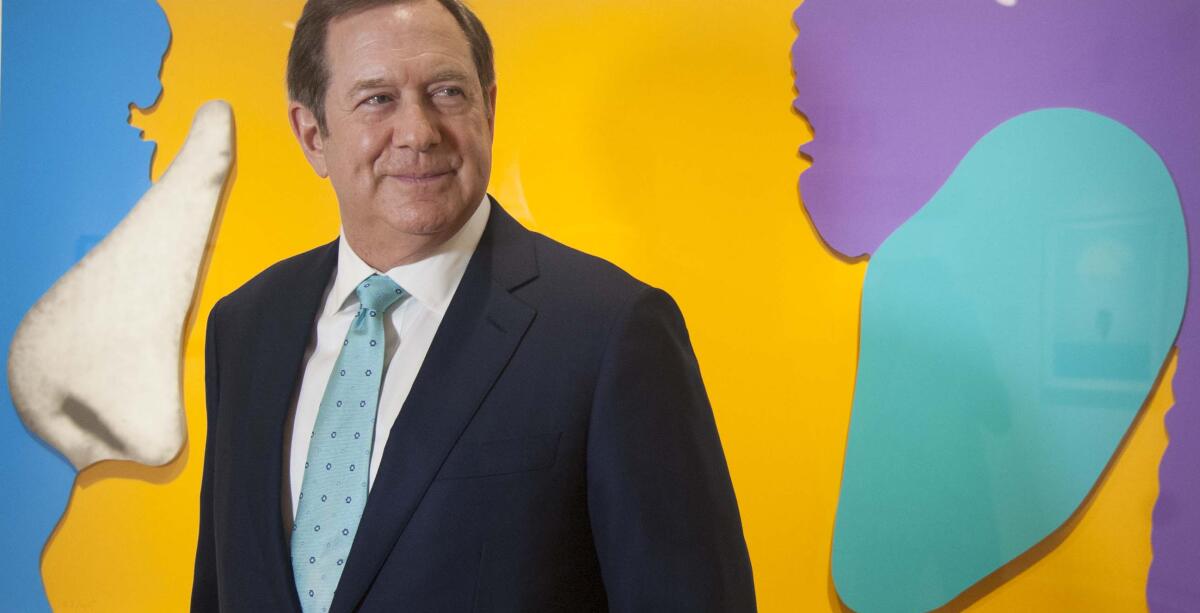
- Share via
Jordan D. Schnitzer is not boring, lest the the navy blazer and penny loafers give the wrong impression.
The real estate magnate and art collector based in Portland, Ore., owns one of the largest known private collections of works on paper in the U.S., including 276 prints by a pioneer of conceptual art, John Baldessari. Schnitzer lent 71 of them to the Laguna Art Museum for a survey exhibition organized solely from his holdings, “I Will Not Make Any More Boring Art: Prints by John Baldessari.”
When Schnitzer arrived at the museum to oversee installation of the works, he scurried from gallery to gallery, eyeballing the prints while spouting Baldessari-isms: “He’s the quintessential teacher!” “Everything he’s done is exquisite!” He gesticulated animatedly, eyebrows rising and falling emphatically — more a sweet, cherubic-faced, know-it-all uncle than contemporary art patron.
Schnitzer, 68, acquired his first work of art at age 14. It was an abstract painting by Louis Bunce from his mother’s Fountain Gallery in Portland, and he made $5 monthly payments until the $60 debt was paid off. Now he collects prints and multiples by postwar and contemporary American artists including Andy Warhol (he owns 816 works), Ellsworth Kelly, David Hockney, Barbara Kruger, Jasper Johns, Louise Bourgeois, Roy Lichtenstein, Kara Walker, Ed Ruscha and Jim Dine. His aim: to create as comprehensive a representation of each artist’s work as possible, with the goal of lending the pieces for exhibitions.
To date, he and his Jordan Schnitzer Family Foundation have lent work to more than 150 museums for 100-plus exhibitions. He considers his 13,000-object collection, which also includes painting and sculpture, to be “a sharing and teaching collection,” he said, adding that he lends the work for free and pays for shipping, framing and often educational programming around the exhibition. He said he never has sold a work, nor does he intend to.
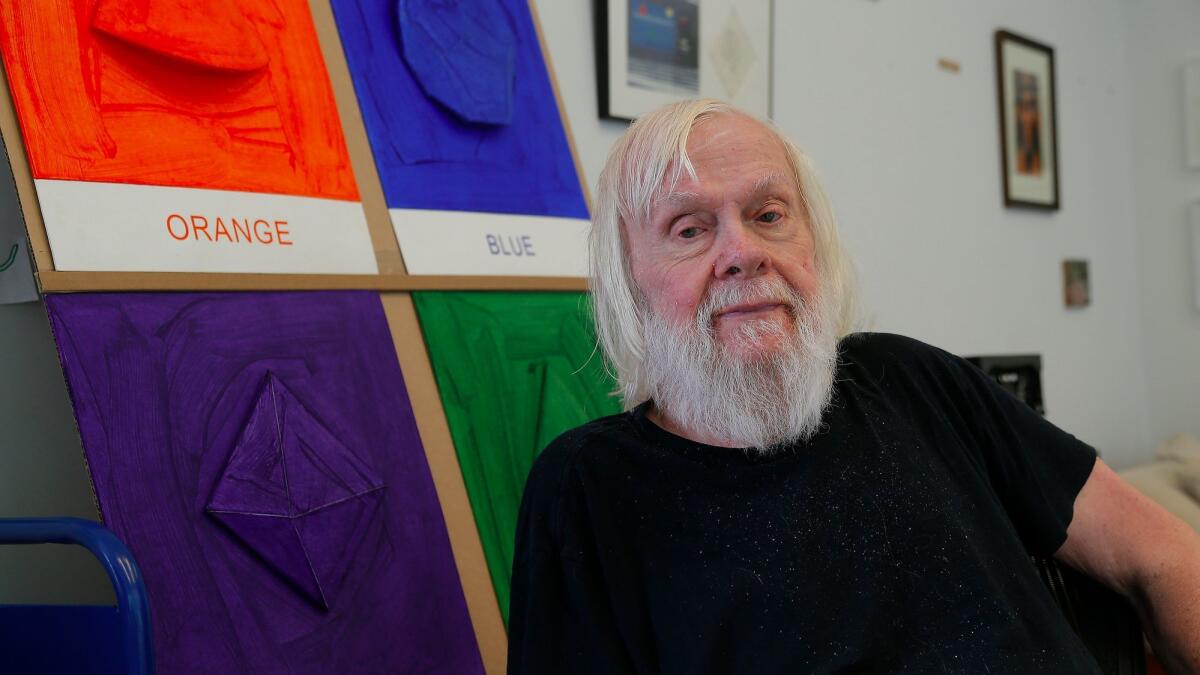
If Schnitzer was a tad overly excited about the new Baldessari exhibition, he could be forgiven. Baldessari is decidedly “not at all boring!” he said. The Venice-based artist, 87, with his scraggly white hair and deep, mellifluous voice, makes colorful work that blends painting, photography and text — often to hilarious effect.
For the Laguna show, guest curator Elizabeth Rooklidge chose to create a chronological survey that speaks to the artist’s interest in printmaking techniques and the range of his subject matter.
“He changed the way we think about art, fundamentally,” Rooklidge said of Baldessari. “It shifted things towards a more conceptual approach. And he did that with a sense of humor that provokes the viewer.”
As Rooklidge spoke, Schnitzer stood beside her, his eyes turning red and welling with tears.
“It’s just the joy of it,” he said of filling museums with art.
In a walk through the show, Schnitzer had much to say about Baldessari’s work:
“We see all the pictures in the magazines, Vanity Fair, the New Yorker, the fashion shows. If we think about that and how we react, it’s either: ‘Oh, my God, this is the excesses of society,’ or on the other hand, it’s intriguing. You wonder: ‘Who gets to sit there? What are they thinking?’ What John does is, he blocks all the faces — and it drives us crazy. If there’s a theme about his work that I like, it’s that he grabs you. You can’t walk by these and not stop to look.”
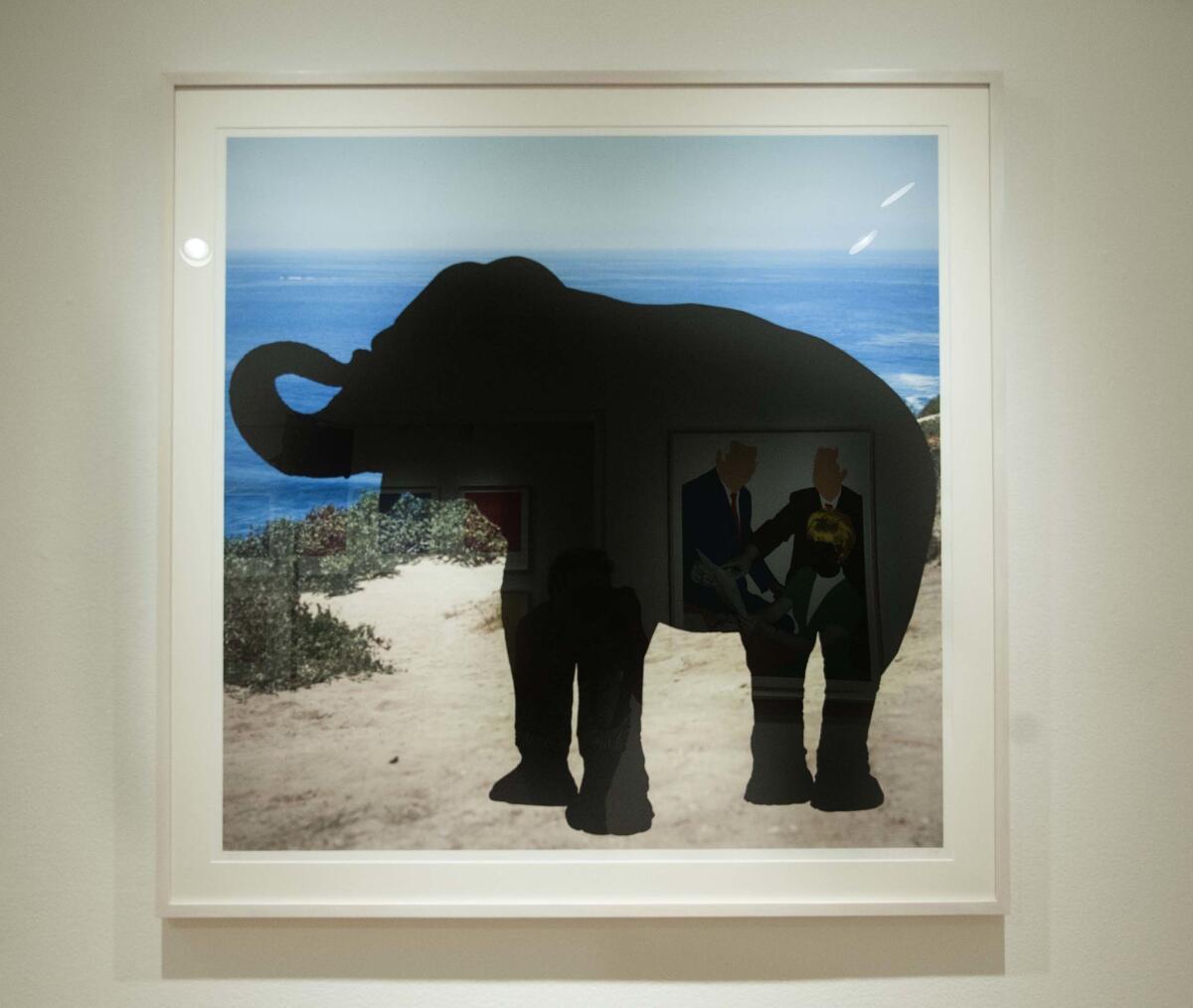
“How crazy is it to take these images that have nothing to do with each other and he puts them together? What’s amazing about this, and the most important thing for me is, the human spirit, the creativity of his mind. There are certain artists that tend to do the same thing over and over; he probably, more than maybe anybody except [Robert] Rauschenberg, has pushed himself.”
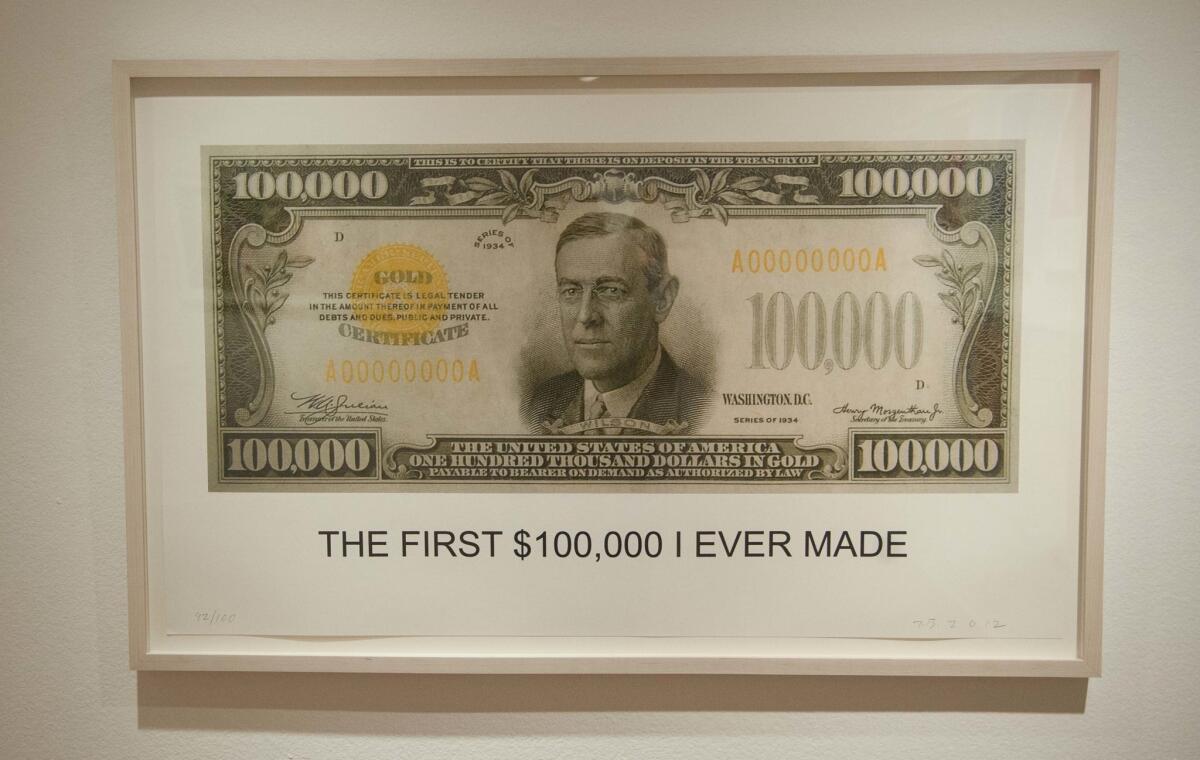
“I think his whole relationship to money is interesting. One reason I have so much respect for him is he spent decades in the trenches. … He had three or four jobs at a time; he was teaching art. Fame came to him much later in life, and he’s far more humble, I think, than some younger artists who are brilliant merchandisers.”
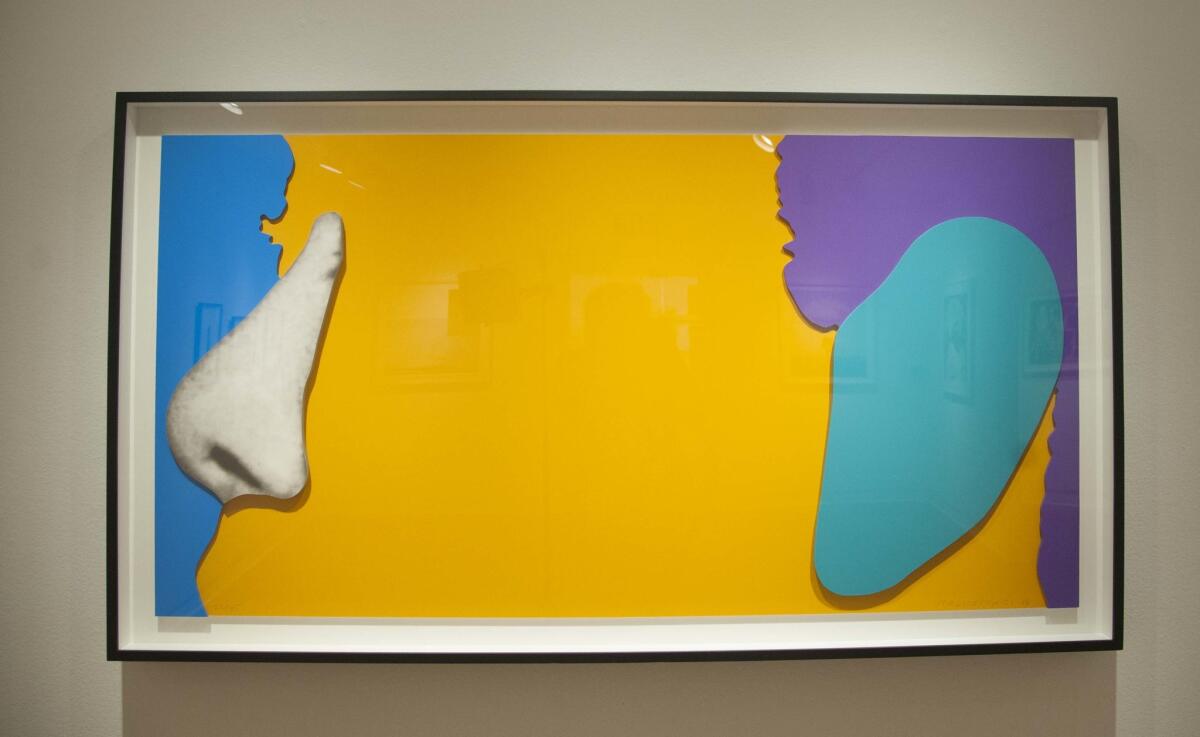
“He loves, and is fascinated by body parts, having them in a disjointed, non-relational kind of way. The nose is a photograph, so it’s quite representational. The ear is an abstract shape. And you have a face here. He’s playing with us. There’s a juxtaposition where on the one hand, it’s representational; and on the other hand, it’s as abstract as it gets. And he’s a master colorist.”
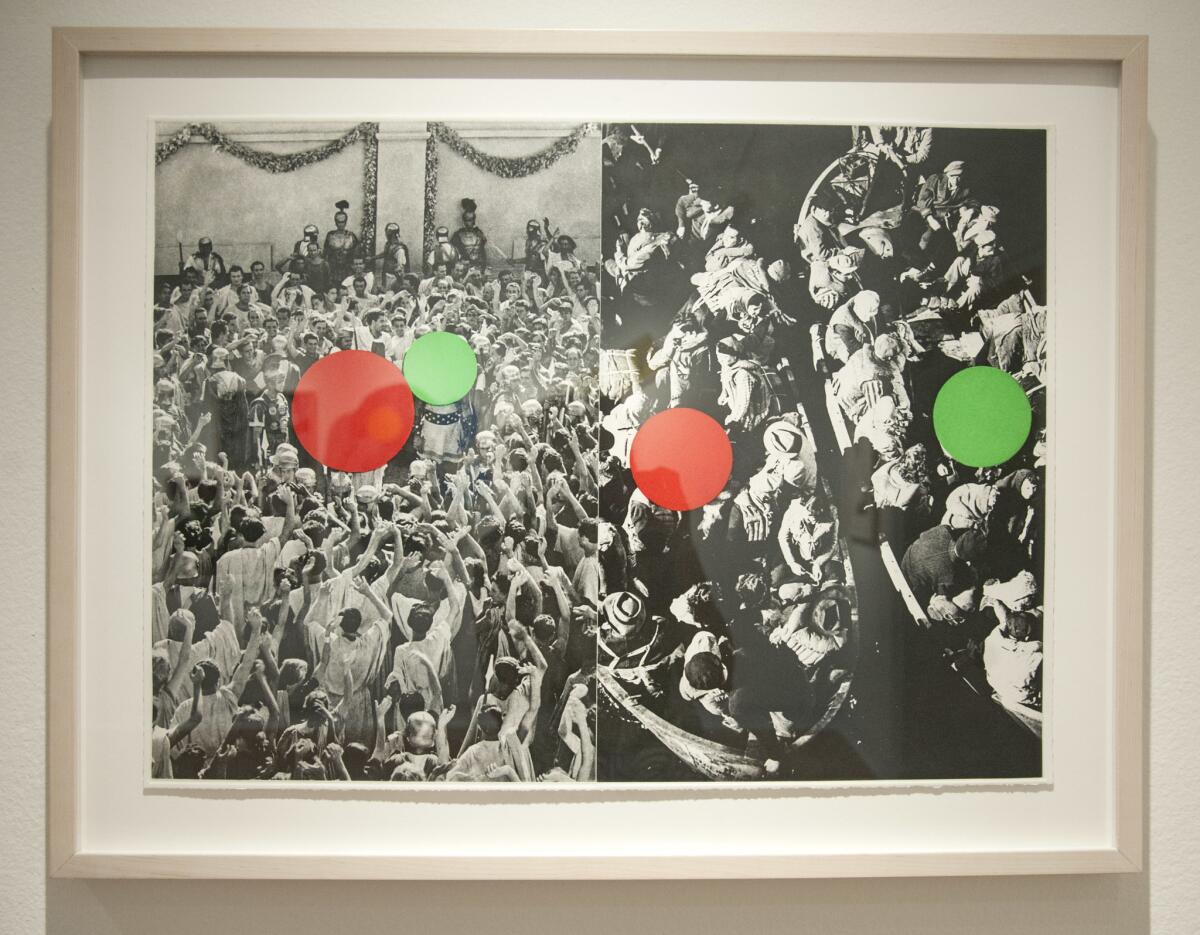
“When you see this, it makes you think about history, movies, time, place, society. You could do a whole three-month sociology course at UCLA on what’s in here. These immigrant people going someplace; here we have people with their allegiance to Rome. The ultimate role of an artist is to get you to think and feel. In this one, you’re thinking. It stops you in your tracks.”
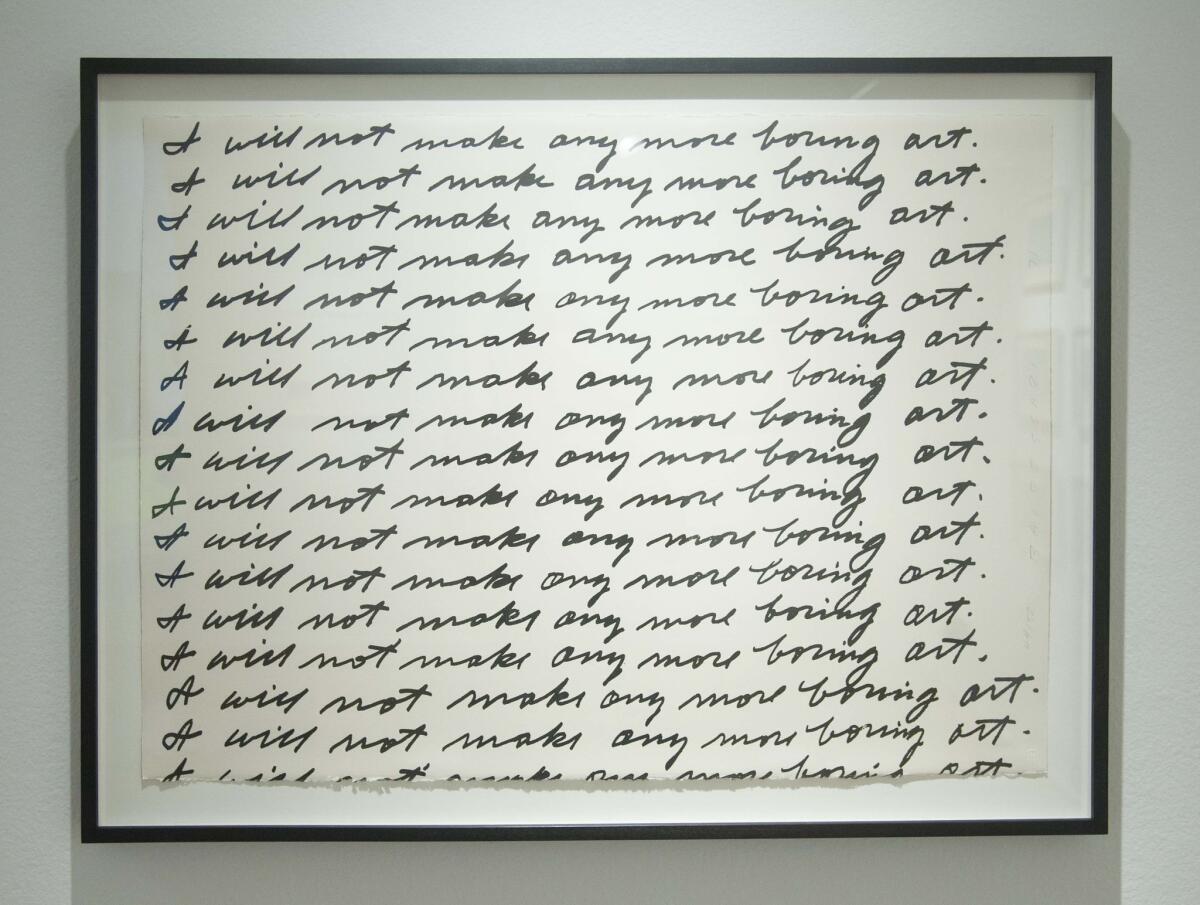
“When you think about where he started with his first [1971] print, this sort of says it all. He was an iconoclast. He was breaking through tradition: ‘I will not make any more boring art.’ ”
On View
‘I Will Not Make Any More Boring Art: Prints by John Baldessari’
Where: Laguna Art Museum, 307 Cliff Drive, Laguna Beach
When: 11 a.m.-5 p.m. Mondays-Tuesdays and Fridays-Sundays, 11 a.m.-9 p.m. Thursdays, through Sept. 22
Admission: $5-$7; 17 and younger free
Info: lagunaartmuseum.org
More to Read
The biggest entertainment stories
Get our big stories about Hollywood, film, television, music, arts, culture and more right in your inbox as soon as they publish.
You may occasionally receive promotional content from the Los Angeles Times.











